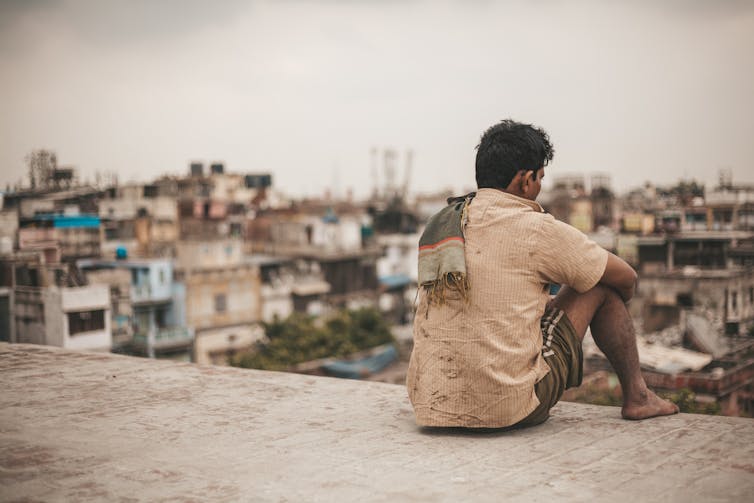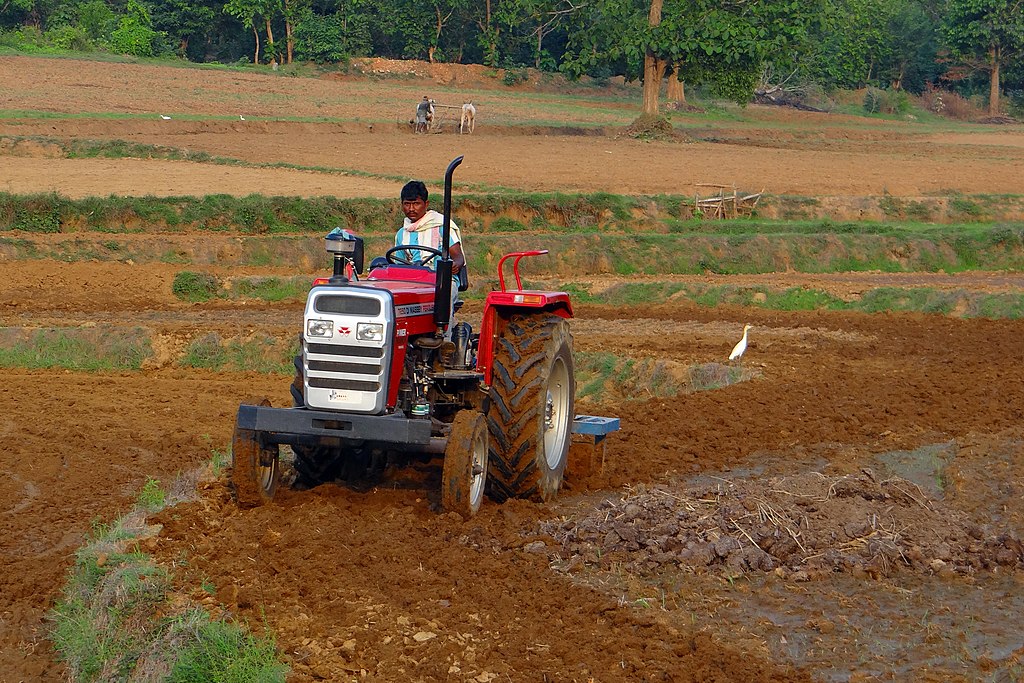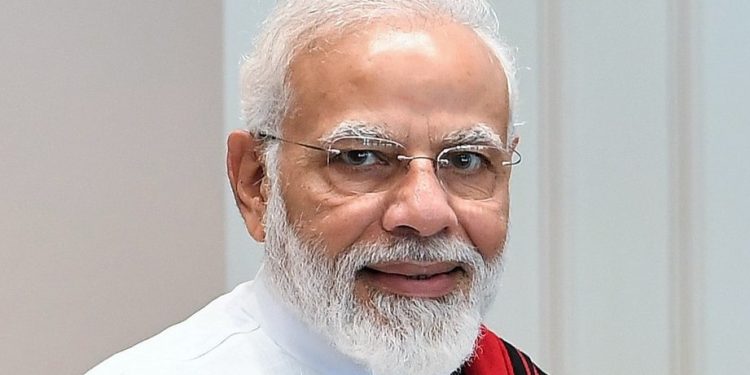Kunal Sen, United Nations University
More than 960 million Indians will head to the polls in the world’s biggest election between April 19 and early June. The ruling Bharatiya Janata Party (BJP), which is led by Prime Minister Narendra Modi, is seeking a third term in office. And the polls suggest it will achieve this objective.
If one was to go by economic growth figures alone, the Modi government’s performance has been impressive. When Modi came to power in 2014, economic growth was sluggish. A series of high-profile corruption cases led to a loss of investor confidence in the Indian economy.
But between 2014 and 2022, India’s gross domestic product (GDP) per capita (a measure of income per head) rose from US$5,000 (£4,000) to over US$7,000 – an increase of roughly 40% in eight years. These calculations use purchasing power parity, a way of comparing general purchasing power over time and between countries.
This growth occurred in spite of an ill-advised attempt early on in Modi’s first term to take Rs500 (£4.80) and Rs1000 (£9.60) notes out of circulation. Scrapping the notes led to an acute cash shortage, slowing the growth in per capita GDP from 6.98% in 2016 to 5.56% in 2017.
According to the International Monetary Fund, India’s economy is projected to grow at a rate of 6.5% in 2024. That is higher than China’s projected growth of 4.6%, and exceeds that of any other large economy. The UK’s economy, for example, is expected to grow by 0.6% in 2024.
However, recent estimates also suggest that inequality in India is at an all-time high. Growth, when it has occurred, has seemingly been unequal. A key challenge facing the Modi government in its next term will be to convert higher growth into productive jobs while also curbing the excess wealth of India’s economic and political elites.
All smoke and mirrors?
India’s economic performance is hard to assess as the government has not published official data on poverty and employment since 2011. This has led analysts to use alternate data sources that are not as reliable as the large and nationally representative consumption and employment surveys of the Indian government’s statistical agency.
As a consequence, one gets wildly varying estimates of poverty. Less than two months before the elections, the Indian government released a factsheet that suggests poverty in India had fallen to a historic low in 2022.
The results were based on a large consumption survey carried out by the Indian government. But the actual data behind the government’s estimates was not released for independent analysis.
The lack of transparency with data has led to a situation where no one really knows what the true estimates of poverty and inequality are. This is a sorry state for a country known for its pioneering household surveys that in the past were far ahead of their time.

The new welfarism
In its second term, the Modi government placed greater emphasis on delivering public goods and social welfare programmes in a less corrupt manner. This saw the launch of a massive rural road construction programme and the enrolment of roughly 99% of Indian adults in Aadhaar, a digital ID system linked to fingerprints and iris scans.
The Aadhaar rollout, in particular, has allowed national and state governments to distribute benefits to the poor directly through their Aadhaar-linked bank accounts. It has also helped to curb leakage in the delivery of subsidies to poor households, which has long been the bane of India’s welfare delivery.
Essential goods such as toilets and cooking cylinders, which are normally privately provisioned, were supplied in large numbers by the government. This led to what Indian economist and the former Chief Economic Advisor to the government, Arvind Subramanian, called “New Welfarism” in India.
The delivery of welfare programmes occurred most rapidly during the pandemic. For example, the government’s food subsidy bill increased by nearly five times between 2019–2020 and 2021–2022, ensuring people were able to access affordable food grains.
There have been other areas of success too. The proportion of Indian villages with access to electricity climbed from 88% in 2014 to 99.6% in 2020. And 71.1% of people in India now own an account at a financial institution, up from 48.3% in 2014.
These massive transfers of cash, along with the greater provision of goods and services to India’s poor, have led to the BJP enjoying increased popularity among marginalised groups. Historically, these groups have tended to vote for the opposition Congress Party.
The lack of good jobs
The Modi government has grown India’s economy. But it has not been as successful in creating productive jobs for the large proportion of India’s labour force who are unskilled and poor.
Around 40% of workers remain in agriculture, and only about 20% work in manufacturing jobs or business services such as IT. Pre-poll surveys suggest that increasing unemployment and inflation are sources of concern for many voters.
The weak record of the Modi government in creating jobs is surprising given that it has floated many initiatives to kickstart manufacturing. The Make in India programme, which was launched as soon as Modi came to power in 2014, aimed to reduce the costs of doing business in India.
This was followed by the more recent production-linked incentive scheme in November 2023. The scheme offered US$24 billion in industrial incentives to boost domestic production in key manufacturing sectors from electronic products to drones. However, manufacturing’s share of output remained the same in 2022 as it was when Modi first took office.

For India to emulate the labour-intensive industrialisation success of China, deeper structural reforms are needed in the country’s product, labour and credit markets. But this will be politically difficult to do as it involves taking on India’s powerful conglomerates and trade unions.
As the Modi government seeks a third term in office, a key challenge that lies ahead is creating productive jobs outside of agriculture for the country’s increasingly educated and aspirational youth.
Kunal Sen, Professor and Director, World Institute for Development Economics Research (UNU-WIDER), United Nations University
This article is republished from The Conversation under a Creative Commons license. Read the original article.











